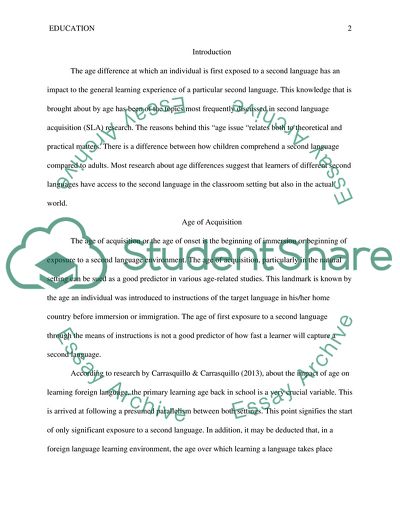Cite this document
(Age Differences in Second Language Acquisition Coursework Example | Topics and Well Written Essays - 1250 words, n.d.)
Age Differences in Second Language Acquisition Coursework Example | Topics and Well Written Essays - 1250 words. https://studentshare.org/education/1820712-age-differences-in-second-language-acquisition
Age Differences in Second Language Acquisition Coursework Example | Topics and Well Written Essays - 1250 words. https://studentshare.org/education/1820712-age-differences-in-second-language-acquisition
(Age Differences in Second Language Acquisition Coursework Example | Topics and Well Written Essays - 1250 Words)
Age Differences in Second Language Acquisition Coursework Example | Topics and Well Written Essays - 1250 Words. https://studentshare.org/education/1820712-age-differences-in-second-language-acquisition.
Age Differences in Second Language Acquisition Coursework Example | Topics and Well Written Essays - 1250 Words. https://studentshare.org/education/1820712-age-differences-in-second-language-acquisition.
“Age Differences in Second Language Acquisition Coursework Example | Topics and Well Written Essays - 1250 Words”. https://studentshare.org/education/1820712-age-differences-in-second-language-acquisition.


